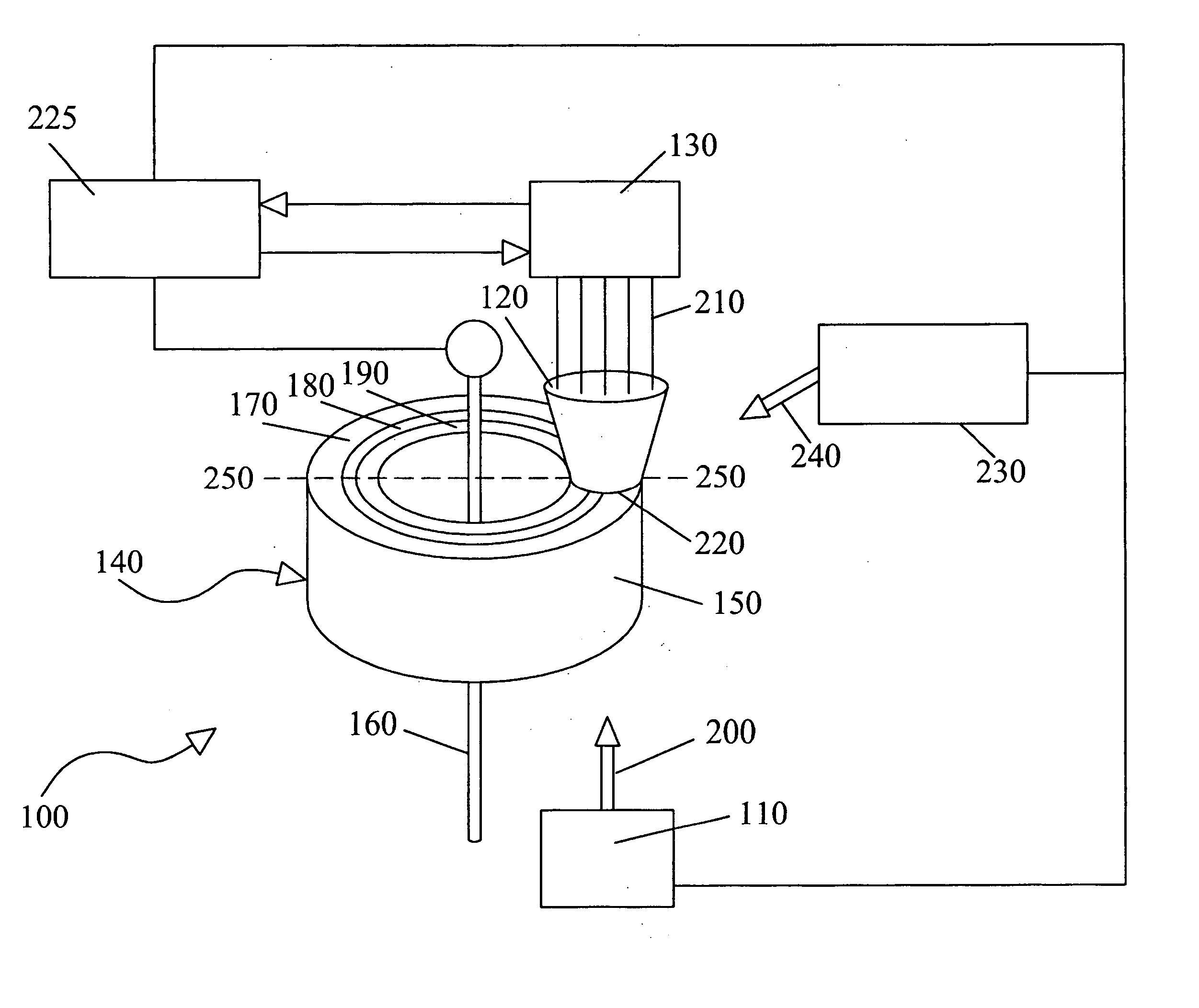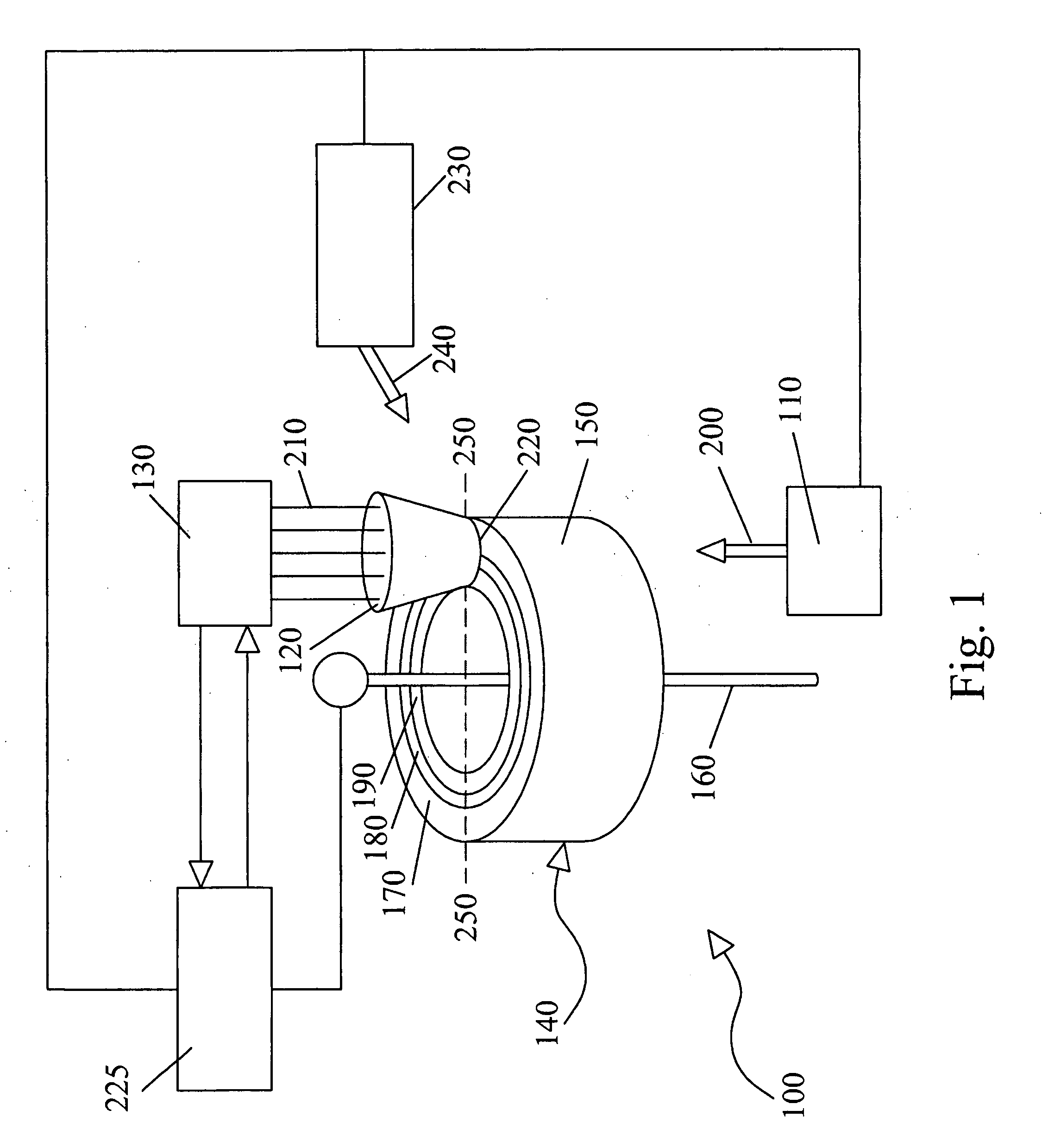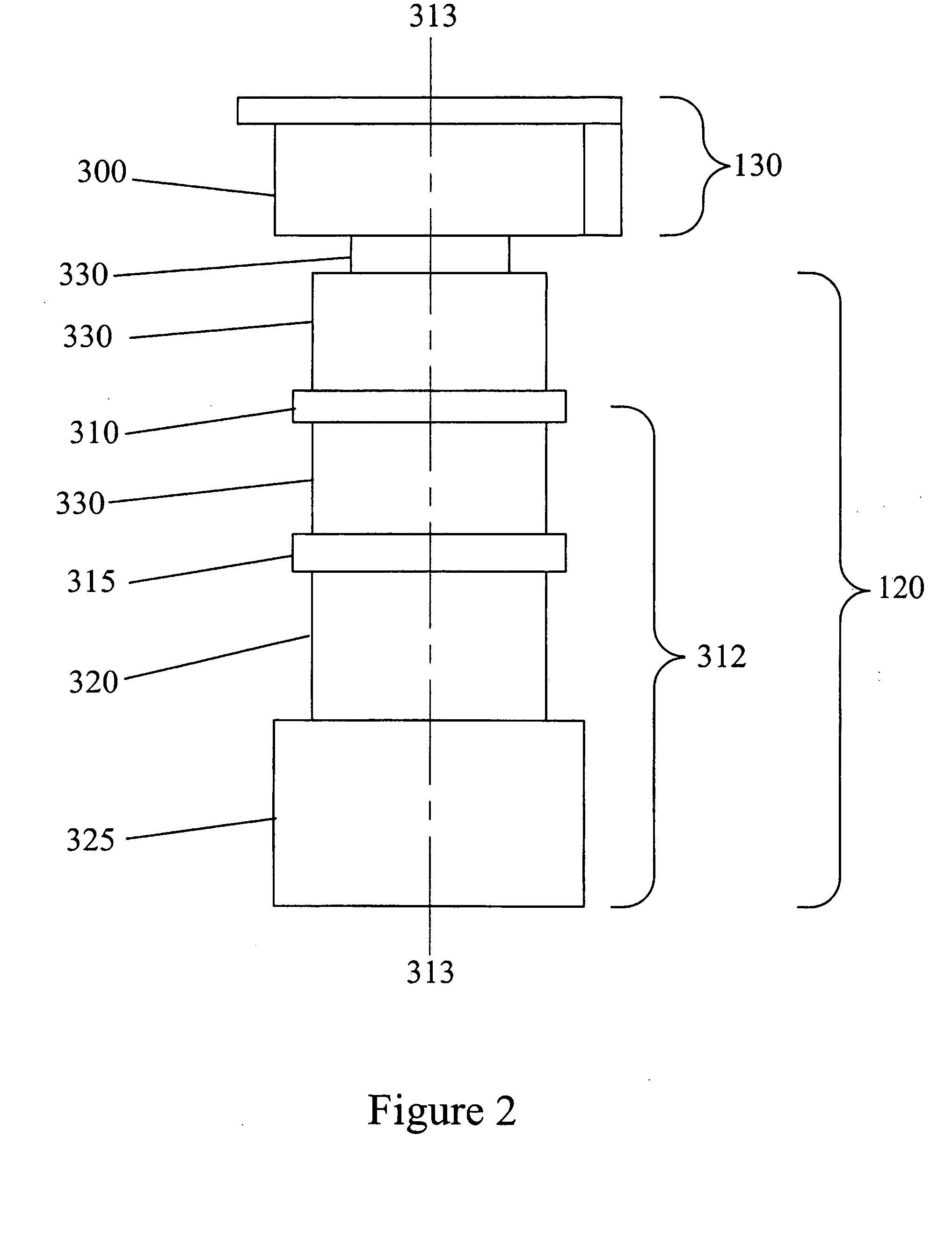Monitoring and control system for blood processing
a control system and blood technology, applied in the direction of instruments, separation processes, centrifugation, etc., can solve the problems of increasing the risk of viral exposure and immunological complications, the inability to consistently produce separated platelet components in centrifugation separation blood samples, and the inability to optimize the use of individual components obtained using this method. , to achieve the effect of improving fluid processing and improving static blood sample processing
- Summary
- Abstract
- Description
- Claims
- Application Information
AI Technical Summary
Benefits of technology
Problems solved by technology
Method used
Image
Examples
example 1
Monitoring the Position of Phase Boundaries Between Optically Differentiable Blood Components Undergoing Density Centrifugation
The ability of the methods and devices of the present invention to monitor and control the position of phase boundaries between optically differentiable blood components was verified by experimental studies. Specifically, it is a goal of the present invention to provide optical monitoring and control systems capable of accurately measuring the position of one or more phase boundaries along the separation axes of a separation chamber of a density centrifuge blood processing apparatus. Further, it is a goal of the present invention to provide optical monitoring and control systems capable of selectively adjusting the position of one or more phase boundaries along the separation axis of a separation chamber to achieve optimal separation and extraction of blood components.
To achieve the aforementioned goals, two-dimensional distributions of transmitted and / o...
example 2
Measurement of the Composition and Flux of Cellular Material Out of a Density Centrifuge.
It is a goal of the present invention to provide multifunctional optical monitoring systems capable of monitoring a plurality of operating conditions of a blood processing device. Specifically, it is a goal of the present invention to provide monitoring and control systems providing simultaneous measurements of phase boundary positions and the fluxes of cellular materials, such as white blood cells, platelets and red blood cells, out of a separation chamber of a density centrifuge. Further, it is a goal of the present invention to provide optical monitoring systems capable of characterizing the cell-type of material separated, extracted and collected. The ability of optical monitoring systems of the present invention to simultaneously monitor the position of phase boundaries in the separation chamber and the composition and flux of cellular blood components through an extraction port was verif...
example 3
Methods of Real-Time Image Processing and Device Control
The present invention also includes a variety of methods for processing data from an optical monitoring system corresponding to two dimensional distributions of transmitted and / or scattered light intensities to provide real time measurements of important operating parameters. Methods of organizing, processing and analyzing optical data are used in the present invention to generate input signals useful for monitoring and controlling blood processing. The present invention includes several computational approaches to managing and synchronizing data acquisition, data analysis and device control processes.
A. Master-Smart Slave Process Control System for Controlling Blood Processing.
Using computer science terminology for information transfer, a process control system of the present invention can be conceptualized as a data “Client” as it requests specific information from the optical robot / smart sensor. Similarly, the optical ...
PUM
| Property | Measurement | Unit |
|---|---|---|
| Composition | aaaaa | aaaaa |
| Flow rate | aaaaa | aaaaa |
| Length | aaaaa | aaaaa |
Abstract
Description
Claims
Application Information
 Login to View More
Login to View More - R&D
- Intellectual Property
- Life Sciences
- Materials
- Tech Scout
- Unparalleled Data Quality
- Higher Quality Content
- 60% Fewer Hallucinations
Browse by: Latest US Patents, China's latest patents, Technical Efficacy Thesaurus, Application Domain, Technology Topic, Popular Technical Reports.
© 2025 PatSnap. All rights reserved.Legal|Privacy policy|Modern Slavery Act Transparency Statement|Sitemap|About US| Contact US: help@patsnap.com



